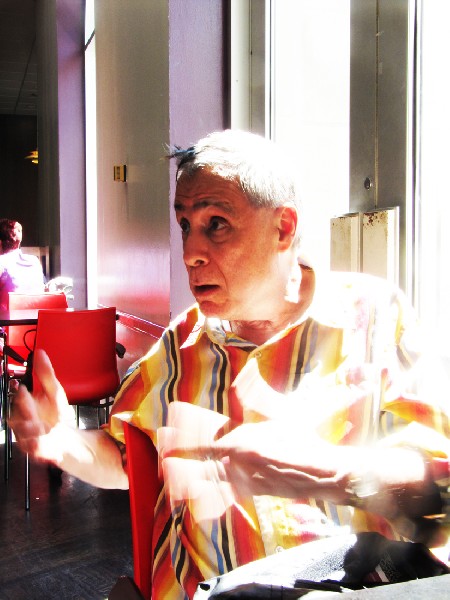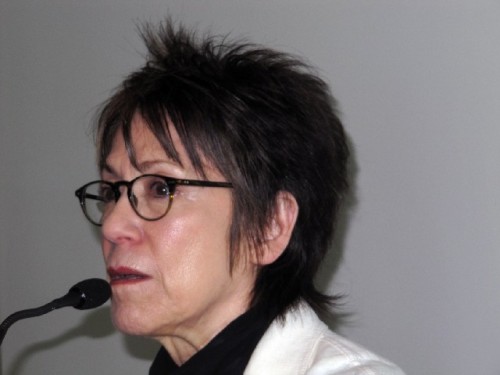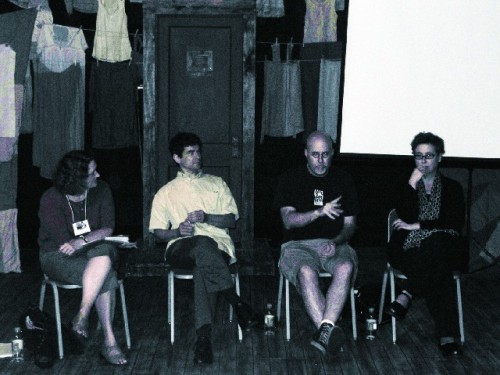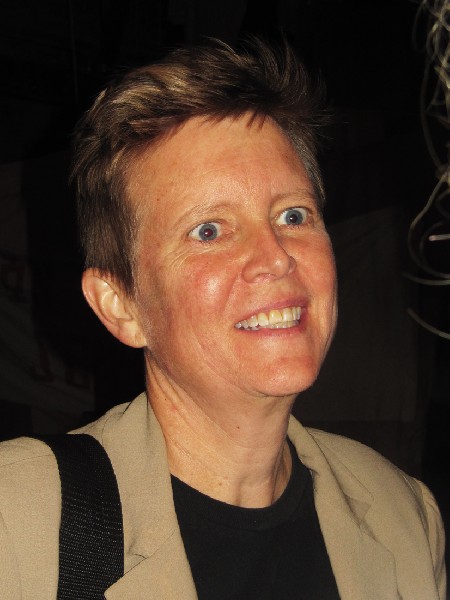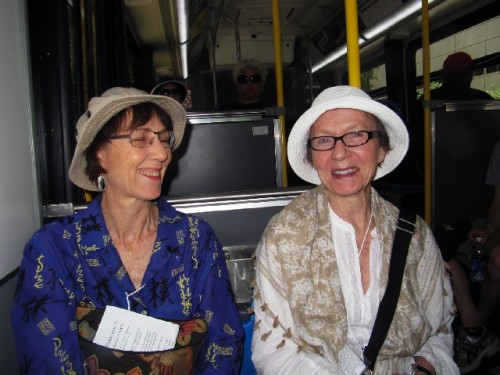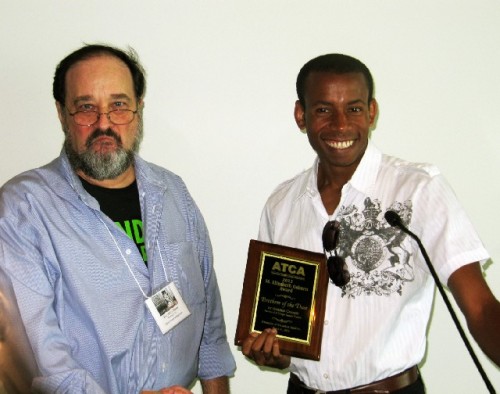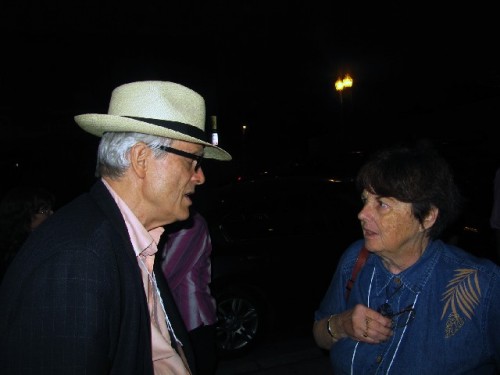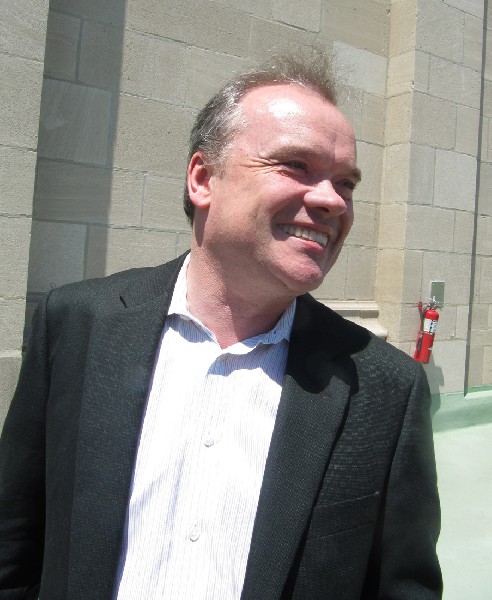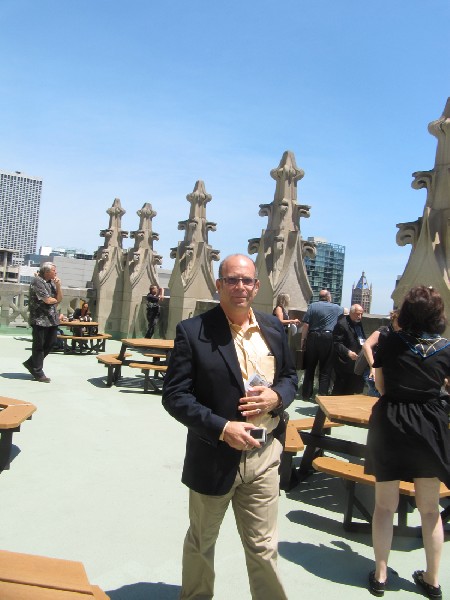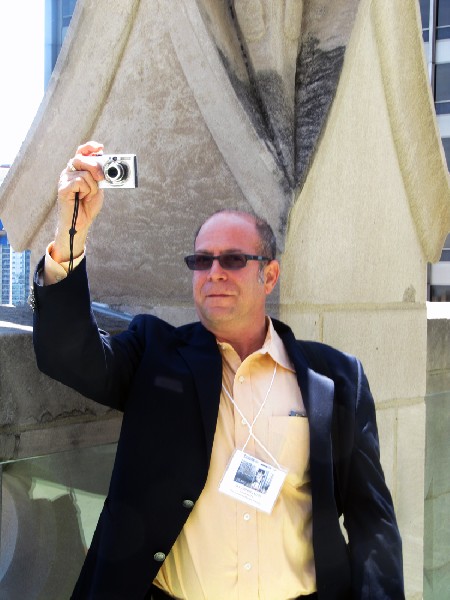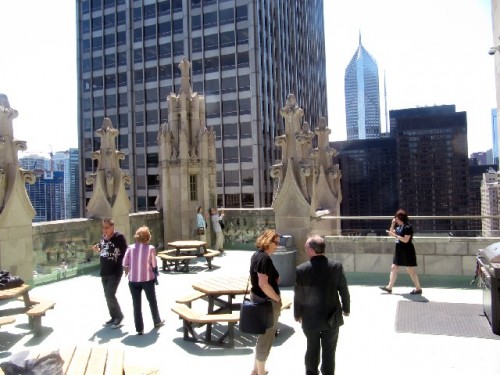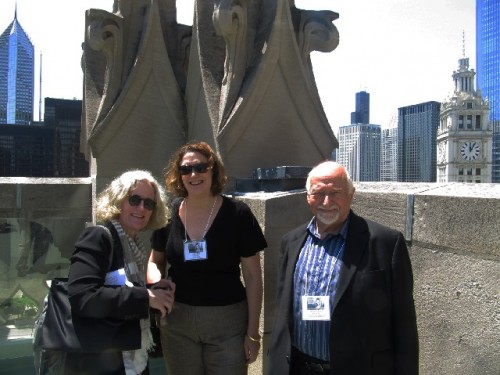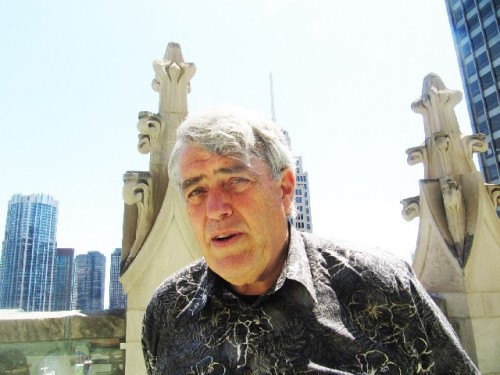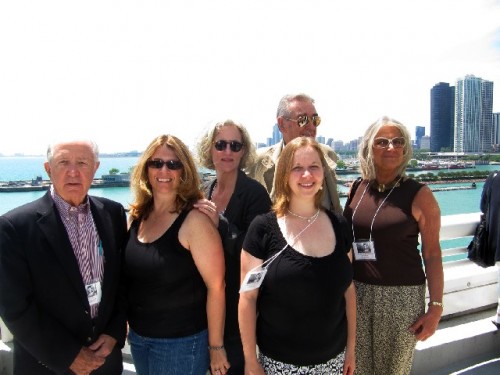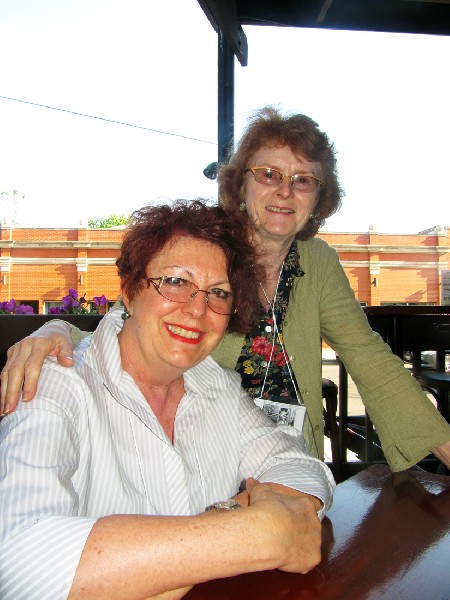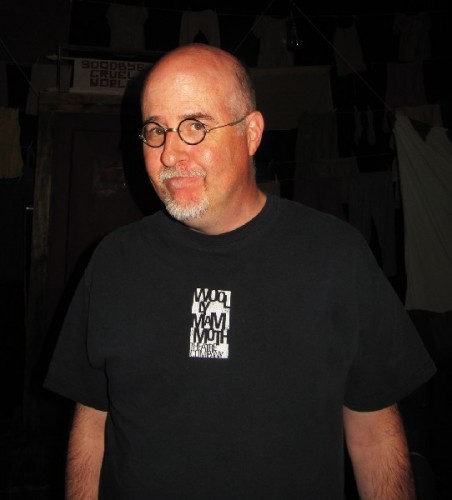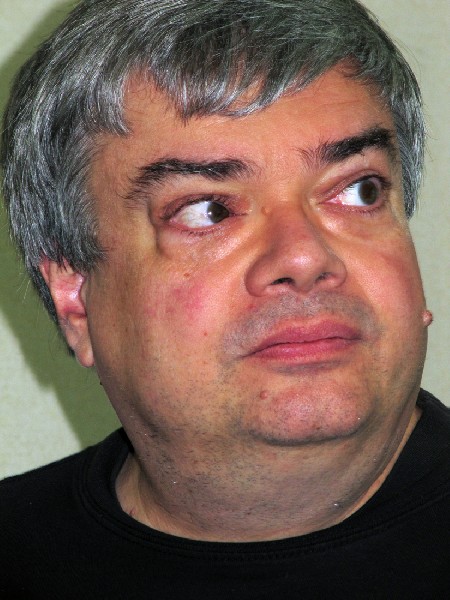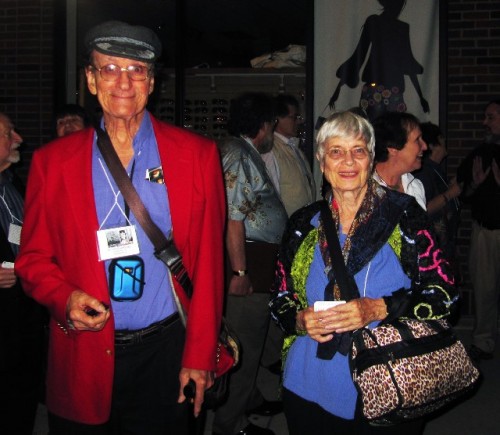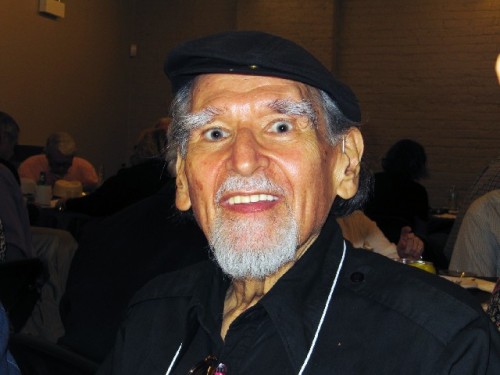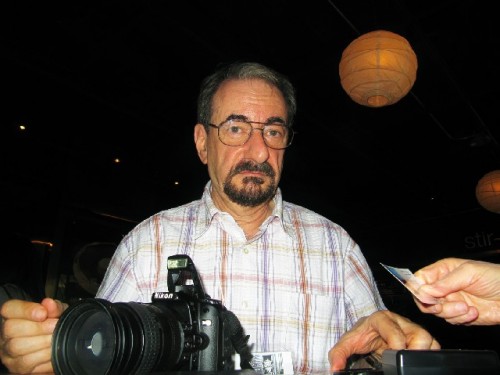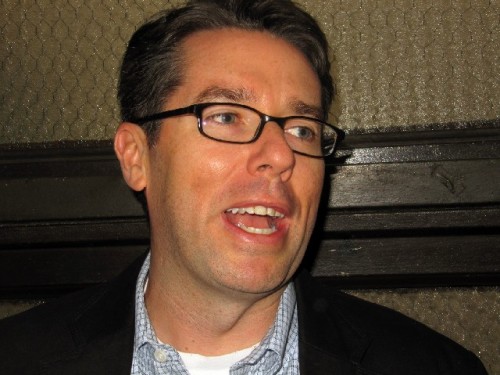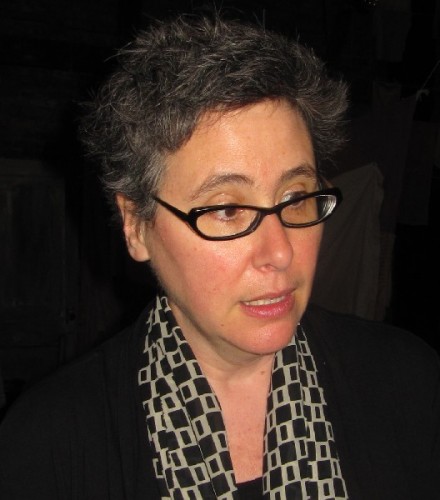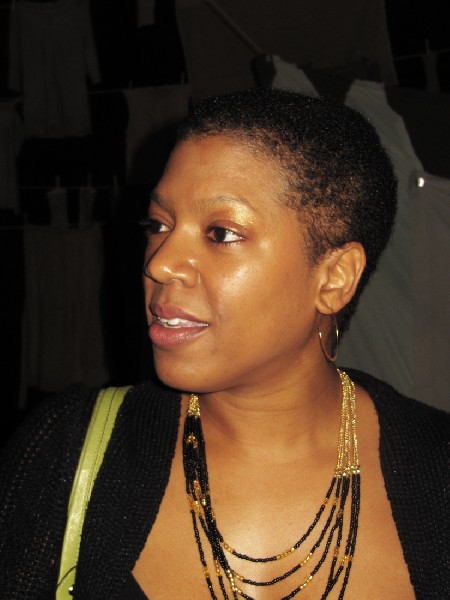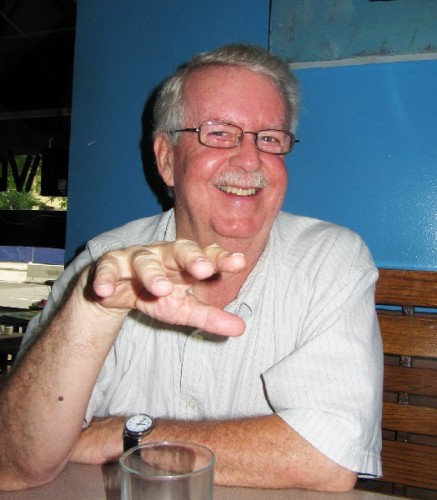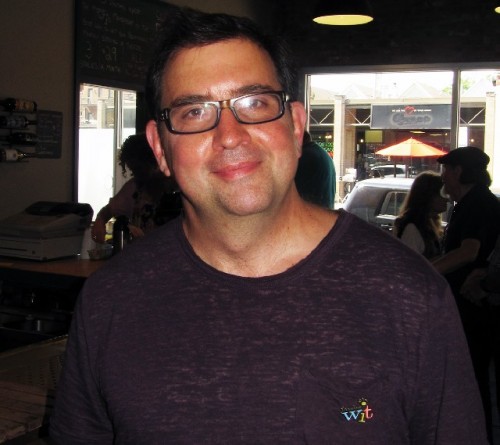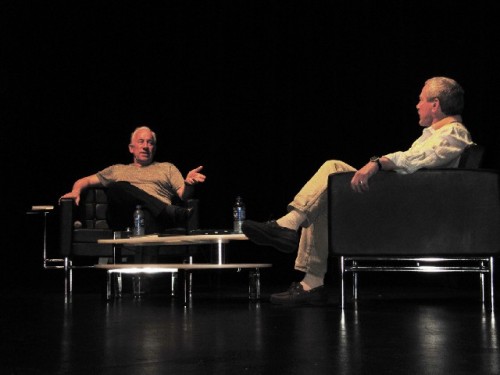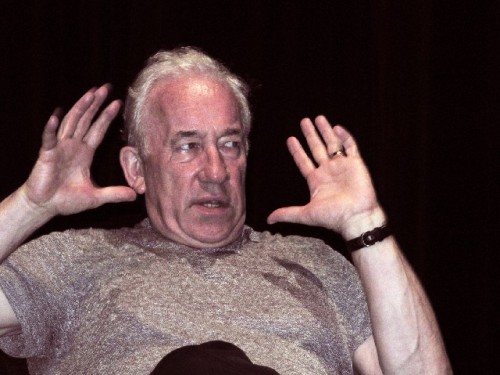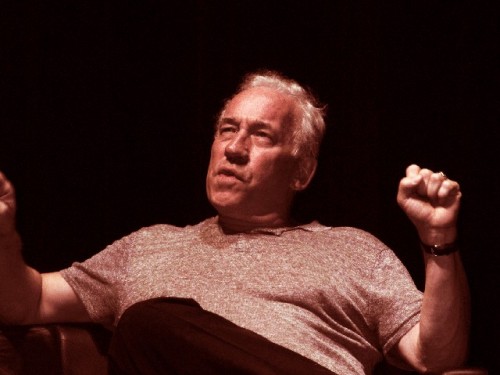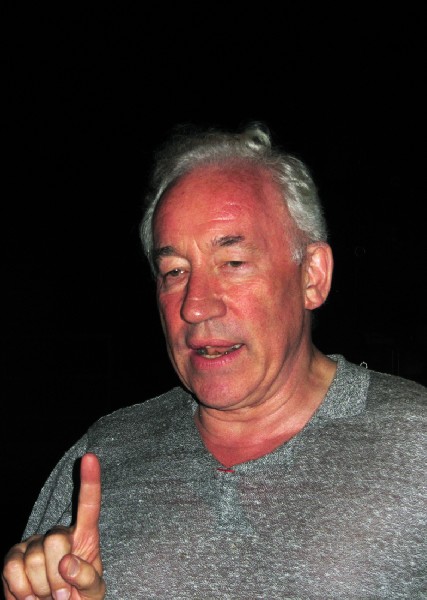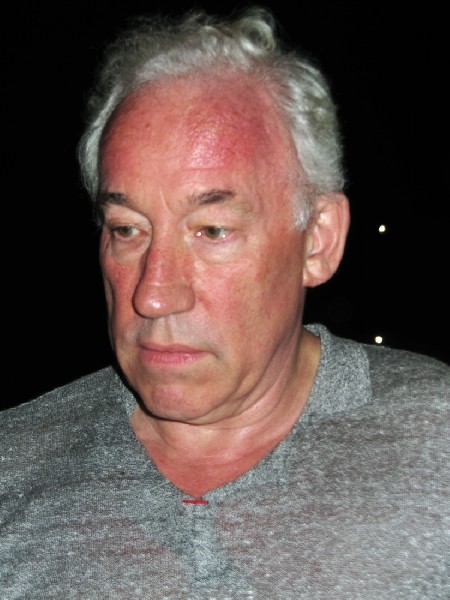American Theatre Critics Association Meets in Chicago
Exploring the Arts and Architecture of the Second City
By: Charles Giuliano - Jun 25, 2012
Recently, we spent ten days exploring the art and architecture of Chicago. From Wednesday, June 13 through Sunday June 17 we experienced a dense schedule of meetings, panel discussions, lectures and performances orchestrated by Jonathan Abarbanel who chaired the annual convention of the American Theatre Critics Association.
There are some 250 members of ATCA of whom 75 members and guests met in Chicago. On Sunday, when the conference wound down, a group of 30 moved on for an addendum in Milwaukee. We returned to the Berkshires and hit the ground running to catch up with the launch of high season.
Our primary motive in arriving early was to catch the final weekend of the Goodman Theatre’s epic and historical production of Eugene O’Neill’s masterpiece, the four act, five hour marathon The Iceman Cometh directed by Robert Falls. Somewhat improbably it starred Broadway musical comedy star Nathan Lane in the lead role of Hickey. Most notably it also included stunning work by Brian Dennehy and the Shakespearian actor, John Douglas Thompson in the meaty role of Joe Mott.
For the past several years, starting with Othello at Shakespeare & Company, we have been trying to see all of Thompson’s performances, publishing reviews and dialogues. Having performed The Emperor Jones for New York’s Irish Repertory Theatre he wanted to dig deeper into O’Neill’s roles for African American actors.
Months ago when we planned to attend the conference, and before Iceman was in rehearsals, we were fortunate to get balcony seats for what proved to be a sold out run. As luck would have it the show was extended and Abarbanel was able to secure coveted seats for ATCA delegates.
Actually, as Thompson commented during a conversation the morning after seeing the show, the balcony provided a great panorama of four stunning sets. We agreed. Astrid observed that she preferred that distant view as opposed to our usual orchestra seats “We had a wonderful tableau and I wouldn’t want to sit too close to all of those drunks.”
Arriving early we also caught the final, Sunday matinee performance of The March, based on the novel by E. L. Doctorow at the renowned Steppenwolf Theatre.
During the course of the conference we came to appreciate why, with some 200 companies, Chicago is known as The Second City. In addition to a schedule of five plays (more were offered if you were willing to attend late night shows) we had an opportunity to interact with Chicago’s critics and artistic directors.
Some of the most rewarding experiences of the conference occurred in the seams of the dense schedule networking with colleague while trudging around to venues and events. We were given week long Chicago Transit Authority passes and handouts on how to get to designated locations. This really helped in providing a lively sense of the city and its diverse neighborhoods. That even included our bus getting snarled in traffic exiting a Cubs game. They played the Red Sox but there was no time to take in a game.
During those crawls around the city, during dinner breaks, or post mortems after meetings there was a lively ongoing dialogue. Critics are reluctant to show their hand to other players but they love to drop juicy hints. There was an ongoing glut of anecdotal information.
Arriving early at the sumptuous Red Roof Inn we got to hang out with our witty friend, the itinerant New Yorker, and ATCA board member, Edward “Fast Eddy” Rubin. The rooms were so miniscule that he set up an “office” across the street in the dining room of the upscale Marriott.
At a corner table he plugged in a computer and made daily entries in journals that he has arranged to bequeath to the New York Historical Society. They are a treasure trove of the daily activities of a life in the arts. Details, for example, of the awesomely expensive meal he enjoyed in Chicago. He showed us the menu of the restaurant which was in walking distance of the hotel but way out of our price range.
I managed to file one review but it was quite an accomplishment. Cleverly, Astrid set up the ironing board at the edge of a bed as a “table.” The room lacked a table or chair.
With typical wit Abarbanel quipped regarding the Red Roof Inn that “I hear it has hot water and air conditioning.” On our scorching last night, however, the air conditioning conked out. There was, however, a more upscale hotel option.
During the beginning of the week, with temperature in the mid 90s, we spent a day and a half exploring the Art Institute of Chicago which has been expanded and renovated since our last visit. We visited the enormous retrospective of Pop artist Roy Lichtenstein. The following day we met with a family friend Yamu who is an exhibition designer for AIC. In his office we were intrigued to see the ground plan for the Lichtenstein installation in some 20,000 square feet.
He pointed out the recent acquisition Painterly Realism of a Football Player-Color Masses in the 4th Dimension, 1915 by the Russian artist Kazimir Malevich. The museum sold four works for $16 million toward a purchase of the small painting said to have cost some $60 million.
Such an enormous expenditure for a single work only makes sense for a great modernist collection like AIC’s. It fills a niche which curators and museum officials consider on a level with its masterpieces A Sunday on La Grande Jatte, 1884, 1884-86 by Georges Seurat, Grant Wood’s American Gothic, Vasili Kandinsky’s Improvisation No. 30 (Cannons), 1913 or de Kooning’s 1950 Excavation.
From the roof terrace of the new contemporary wing of the AIC we ascended along a ramp, with stunning city views, to Millenium Park. In the brutal heat it was soothing to remove shoes, roll up cuffs and stick my feet into a long, narrow “sculpture” trough of cool water. We moved on to see our reflections delightfully distorted in the mirrored sculpture of Anish Kapoor. From there, in the shade, we attended a rehearsal of the Grant Park Symphony Orchestra, in the Pritzker Pavilion designed by Frank Gehry.
It is a recent addition to a great legacy of architecture that started when the city was rebuilt after the Great Chicago Fire of 1871. With guidebook in hand, during prior visits, I pursued self guided tours of the historic skyscrapers of the Loop. And took a T ride to Oak Park to see Frank Lloyd Wright’s then decaying Unity Temple, many private residences, and a tour of the seminal Robie House in Hyde Park. I even took a car ride to track down Louis Sullivan’s atypical design for a small Greek Orthodox Church.
During this visit we opted for an architectural river tour with Rubin. During a scorching day it was wonderful to spend an hour and a half on the water. Our guide, an older woman, was just wonderful. She conveyed a great passion and love for the magnificent mix of masterpieces flanking the canals. It was a wonderfully laid back way to see so many great buildings. No other American city can match its depth, beauty and history.
Add to that magnificent art and theatre as we discovered when the conference kicked in on Wednesday. We have vowed to make an annual visit to Chicago. Our New York correspondent, Susan Hall, often files coverage of the city’s Lyric Opera and leading theatre companies.
Following an opening reception we walked to the Goodman Theatre just a few blocks away. Most of the group saw Iceman but there was also an option of the more manageable Immediate Family by Paul Oakley Stovall on the Goodman’s smaller stage.
On Thursday morning, during a continental breakfast and general membership meeting, on the 20th floor of the historic Chicago Tribune Tower, there was lots of buzz and widely divergent takes on Iceman. When the meeting adjourned the Tribune’s theatre critic, Chris Jones, invited us to enjoy the views from the tower’s terrace.
From there we went on by T for a special matinee performance of My Kind of Town (world premiere), a gritty docudrama about police torturing suspects to extract false confessions at TimeLine Theatre Co. Then we caught busses continuing on to Black Ensemble Cultural Center, 4450 N. Clark Street and a pre performance buffet hosted by founding artistic director Jackie Taylor. This included a tour of the new $19 million facility before a performance of The Marvin Gaye Story: Don’t Talk About My Father Because God Is My Friend. Some hardy souls continued on for late night performances.
On Friday morning, at Chicago Shakespeare Theater in the tourist destination, Navy Pier, we were welcomed by artistic director Barbara Gaines and executive director Criss Henderson followed by a presentation of the Osborne and Primus awards to playwrights Darren Canady and Caridad Svich.
After a brief break there was the annual Perspectives in Criticism keynote address delivered by Wall Street Journal critic Terry Teachout. Following The Power of Enthusiasm he took questions in what proved to be a lively dialogue.
He explained his agreement with the Journal to file 100 reviews a year including every Broadway opening and selections of Off Broadway. Remarkably, 50 of his allotted reviews cover national theatre. He poignantly described the demands of constant travel, airport delays, and bad weather. Teachout articulated the rewards of discovering remarkable theatre all over America. It has earned him an informal title as America’s Critic. But there was an irony as he was addressing an assembly of ATCA members who are, indeed, America’s Critics.
I spoke with him briefly about his first play, Satchmo at the Waldorf, with John Douglas Thompson playing both Louis Armstrong and his manager Joe Glaser. It premieres at Shakespeare & Company in late August. This past winter I read his wonderful book Pops a Life of Louis Armstrong which led to the play. I have been listening to the music of Armstrong’s Hot Five and Hot Seven and the early artists of New Orleans like Jelly Roll Morton (The Alan Lomax Library of Congress sessions), Freddie Keppard, Bunk Johnson, The Original Dixieland Jazz Band, King Oliver, Johnny Dodds and Sidney Bechet. Burning CDs I have been sharing much of this early jazz with Thompson and several friends.
For the afternoon sessions there was a Diversity at the Top panel discussion at Theater Wit, 1229 W. Belmont, with artistic directors Chay Yew (Victory Gardens), Bonnie Metzgar (About Face) and Lili-Anne Brown (Bailiwick Chicago). It was followed by a panel on The Permanent Avant-Garde with representatives of the Curious Theatre Branch, the Neo-Futurists and Theater Oobleck. It raised the issue of whether the term, avant-garde, which has such an historical locus is still relevant. During an anything goes era of post modernism just what does that mean? We have passed the time when actors can shock an audience by taking their clothes off.
Following a dinner break with the German born, Angelika Jansen, a delegate from San Antonio, Texas we were randomly assigned to one of the three shows at Theatre Wit. We much enjoyed the charming Tigers Be Still by Kim Rosenstock. Again a group rushed off to late night shows.
On Saturday morning it was a relatively short walk to MCA Stage at the Museum of Contemporary Art. There was a general membership meeting and committee reports. After some discussion of possible destinations it was voted to hold the 2013 conference at the Contemporary American Theatre Festival in Shepherdstown, West Virginia next summer. Organizing conferences entails an enormous amount of work. It was decided to give New York members a break as well as discussion of plans for Seattle and Southern California. Significantly, it was the first Chicago gathering in ten years. Although Abarbanel and ATCA president, Jay Handelman, of Sarasota, Florida informed us of plans to host the international conference soon in Chicago.
After a break Abarbanel conducted a dialogue with the British actor and author Simon Callow. When Callow finally paused for breath, humorously, Jonathan informed us that he had prepared a number of questions. That hardly seemed necessary as Callow proved to be wonderfully entertaining with a barrage of anecdotes. It seems that when he wrote a fan letter to Sir Lawrence Olivier he was astonished when he received an invitation to join the National Theatre. In its box office. That led to a life on stage. With time to write a book on Oscar Wilde. Currently he is working on his third and final volume on Orson Welles. Again the Q&A that followed was just brilliant.
During an afternoon off before evening theatre we explored the Museum of Contemporary Art with the North Carolina based critic Perry Tannenbaum and his wife. Over lunch we learned a lot about a mutual interest in jazz and the annual Spoleto Festival. Then we explored the mostly mediocre collection and special exhibitions of the Museum of Contemporary Art.
Prior to a performance of the press opening and world premiere of the musical Eastland we were greeted by the creative staff of the Tony Award Winning Lookingglass Theatre.
It was Saturday night as we walked home along the Magnificent Mile. On date night scantily clad girls enacted mating rituals with clusters of prowling males. It was also great to experience the vibrancy of a great city on a steamy summer night.
For our final breakfast at the local West Egg we were joined by a newly elected ATCA board member Michael P. Howley of Montgomery, Alabama. He shared some of his reflections and insights before rushing off to the final meeting.
Now, back home in the Berkshires, a week later is it daunting to reflect on such an intense and insightful experience. We will look forward to another adventure with our many new colleagues and friends.
Memories of Chicago where I once saw a man who danced with his wife.


